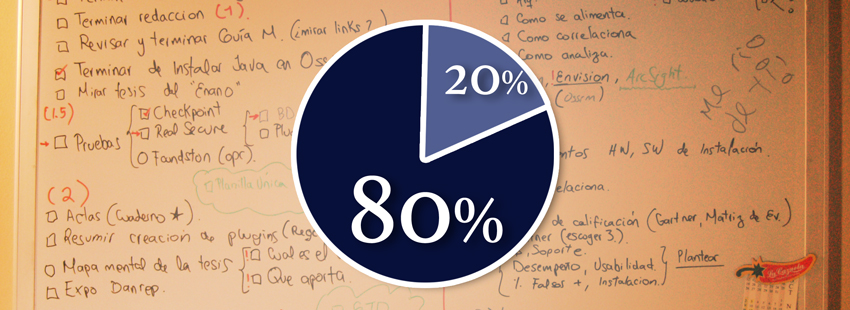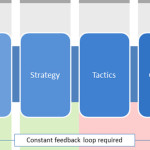Do you use a to-do list? Good. Does it ever get shorter? If you’re like me – not really. My to-do list is long and it seems to get longer all the time. But I’ll come clean and tell you right now that, as important as productivity is, I’m never going to finish it. I’m not even going to try. Why? Because the effort just isn’t worth it. I look at my to-dos all the time, and every time I look at my list, I consider what my goals are, what the context is around me, and I start to assign priorities to my tasks. Many tasks never get done. They were born as a fleeting thought. Potentially good ideas that came about in relation to something else. The tasks took a little breath, survived long enough to make it onto my list, but things changed, projects moved on, now they’re tagged as “low priority”, and in a few months they’ll probably be deleted. To-dos can only survive in low-priority mode for so long before their sheer existence causes me more annoyance than their eventual potential is worth.
(On this note, try deleting tasks from time to time. It feels great. Almost as great as actually completing them and checking them off your list. But I digress. Let’s get back to the Pareto principle.)
Wilfredo Pareto was a late 19th, early 20th century Italian super thinker (i.e. simultaneously an economist, sociologist, engineer, philosopher, etc.) who observed that 80% of the land in Italy was owned by 20% of the population. People now apply the 80-20 rule to just about everything. For example: 80% of the work is done by 20% of the people, or the richest 20% control 80% of the world’s money.
What the Pareto principle means to us is that, if we apply the principle to our to-do list, we should understand that 20% of our work results in 80% of our total production value (i.e. “success”). In practical terms, this means that, out of 10 separate projects we might be working on, we will achieve the greatest rewards if we focus the bulk of our energy on our two most important priorities. The last eights tasks should only get 20% of our attention, combined.
Keep this principle in mind when prioritizing and selecting what you work on. You will find it does great things for your productivity and overall success. Exactly HOW you prioritize your top two most important tasks is another conversation entirely.
Feature image credit: Photo by Flickr user Mario F Monsalve, modified by David Folkerson / CC BY-NC-SA 2.0


 Senior communicator | Team leader | Web and social media expert | Strategist.
I love making new professional acquaintances. Reach out if you want to talk communications, marketing, or ultimate frisbee.
Senior communicator | Team leader | Web and social media expert | Strategist.
I love making new professional acquaintances. Reach out if you want to talk communications, marketing, or ultimate frisbee.






Join the conversation